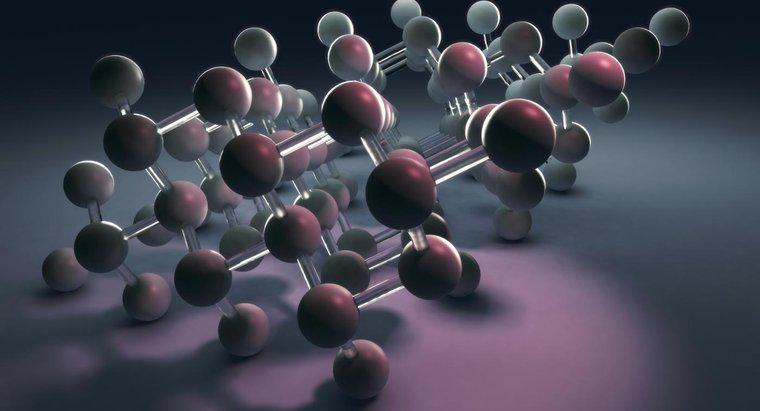Es gibt 18 Isomere von Octan, nämlich n-Octan, 2-Methylheptan, 3-Methylheptan, 4-Methylheptan, 2,2-Dimethylhexan, 2,3-Dimethylhexan, 2,4-Dimethylhexan, 2,5-Dimethylexan, 3,3-Dimethylhexan, 3,4-Dimethylhexan, 3-Ethylhexan, 2,2,3-Trimethylpentan, 2,2,4-Trimethylpentan, 2,3,3-Trimethylpentan, 2,3,4-Trimethylpentan, 2-Methyl-3-ethylpentan, 3-Methyl-3-ethylpentan und Tetramethylbutan. Die chemische Formel für Octan ist C8H18.
Oktan ist ein Alkan. Es hat 18 Strukturisomere, wie oben gesehen. Das wichtigste Isomer dieser Gruppe ist das 2,2,4-Trimethylpentan (bekannt als Isooctan), da es als Referenzwert in der Oktanzahlskala verwendet wird. Isooctan, das 2,2,4-Trimethyplentan-Isomer, ist ein Bestandteil von Benzin und hilft, das manchmal auftretende Motorklopfen von Fahrzeugen zu reduzieren.
Die 18 Isomere von Octane haben alle Schmelz- und Siedepunkte.
- N-Octan hat einen Schmelzpunkt von -57 °C und einen Siedepunkt von 126 °C.
- 2-Methylheptan hat einen Schmelzpunkt von -109 °C und einen Siedepunkt von 118 °C.
- 3-Methylheptan hat einen Schmelzpunkt von -121 °C und einen Siedepunkt von 119 °C.
- 4-Methylheptan hat einen Schmelzpunkt von -121 °C und einen Siedepunkt von 118 °C.
- 3-Ethylhexan hat einen Siedepunkt von 119 °C.
- 2,2-Dimethylhexan hat einen Schmelzpunkt von -121 C und einen Siedepunkt von 107 C.
- 2.3-Dimethylhexan hat einen Schmelzpunkt von -110 °C und einen Siedepunkt von 116 °C.













